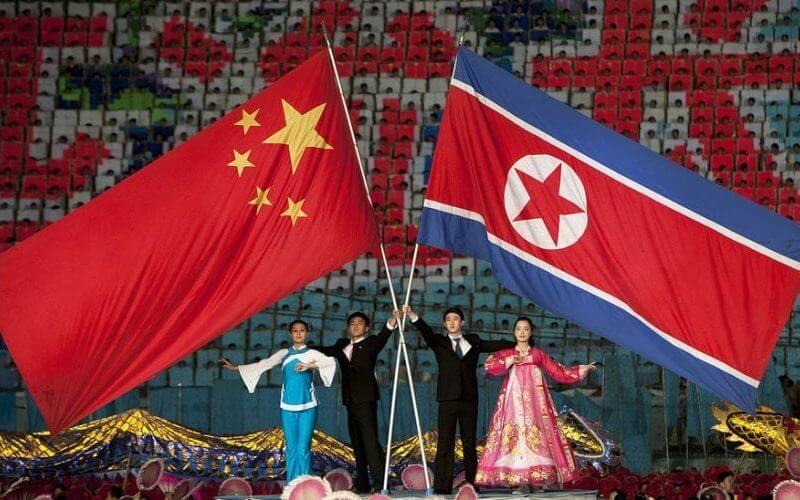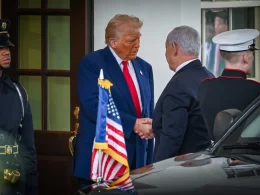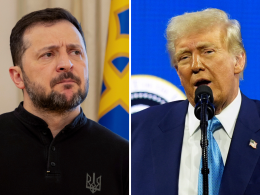The rise of a modern China and the instability of North Korea have caused the United States to reevaluate its security and diplomatic relationships with its allies in the region. Cold War Pacific containment policies may no longer be effective against rivals who have grown more powerful and assertive since the U.S. first assumed regional military leadership after the defeat of the Japanese Empire in 1945. Here are five ways the U.S. is dealing with the new security realities in the Pacific.
1. Japan
With over 50,000 U.S. personnel stationed within its borders, Japan is the largest host nation for the U.S. military in Asia and the world. The U.S. military relationship with Japan is a product of post-World War II agreements, that have often caused some frustration in Washington due to Japan’s constitutional restrictions on the use of its armed forces. These restrictions have been interpreted by many Japanese governments as creating limits on the ability for Japan to deploy military forces outside its borders.
The current security issues caused by China and North Korea have compelled the current Japanese government of Prime Minister Fumio Kishida to turn away from Japan’s history of relying on the U.S. for its military needs. On Dec. 16, Japan announced a five-year military modernization and expansion plan, including a pledge to spend an additional $320 billion for upgrading their armed forces. Among the proposed expenditures that Japan is planning to implement will be the purchase of long-range missiles that would give Japan first-strike capabilities against China and North Korea. This modernization policy is the largest build-up of Japan’s military since the end of World War II and would result in the country being the world’s fourth largest military spender after the U.S., China, and India.
In addition to reforming its own military posture, on Jan. 11, Japan and the U.S. announced that both countries would update the current defense agreement between the two nations. The new agreement states that the current U.S. Marine contingent stationed in Okinawa will be replaced with anti-ship missile batteries and upgraded intelligence units designed to monitor Chinese military activity. U.S. and Japanese officials will also work together to jointly attempt to counter the threats that China’s growing space program may create.
2. South Korea
Second only to Japan in regard to the amount of military personnel stationed in Asia, South Korea has hosted a large U.S. military presence since the Korean War. South Korea’s security needs are unique in that they are not only required to deal with an ever-aggressive China, but also the unbridled nuclear ambitions of their neighbor North Korea.
The almost 29,000 military members that the U.S. currently has stationed in South Korea have traditionally operated under a premise of providing security in the event of a conventional invasion by North Korea. This defense doctrine has been going through changes recently because of North Korean dictator Kim Jong-Un’s erratic behavior regarding his nation’s nuclear and missile programs.
According to the South Korean military, in 2022, North Korea launched a record 95 missiles from its territory, in defiance of U.N. Security Council resolutions that prohibit the country from testing ballistic missiles.
Many of these missiles have flown over South Korean and Japanese airspace, causing the respective countries to mobilize their military forces. The North Korean nuclear and missile programs have become such a concern for South Korea, that on Jan. 11 of this year, South Korean President Yoon Suk-Yeol made a suggestion that South Korea might want to develop their own nuclear weapons, a proposal that many believe would have never been considered a few years ago.
A big concern for the U.S. with North Korea’s missile program is their development of the Hwasong-17 ICBM. Commenting on a successful Hwasong-17 launch on Nov. 19 of last year, Japanese Defense Minister Yasukazu Hamada said that the missile could have had a maximum range of 9,320 miles, making it possible for it to hit the U.S.
In response to North Korea, the U.S. and South Korea have been substantially increasing joint military drills, including two different air exercises that concluded last week. As a sign of the seriousness that both countries assign to North Korea, these military exercises have included some of the most advanced aircraft in their arsenals such as B-1B bombers, and F-35 fighters. On Thursday U.S. Defense Secretary Llyod Austin told reporters to expect more military exercises aimed at North Korea in the immediate future, using both ground and sea-based assets. The recent increase in U.S. and South Korean military activity in the region has not gone unnoticed by Pyongyang, causing an unnamed North Korean foreign ministry spokesperson to tell the Korean Central News Agency, “The DPRK will take the toughest reaction to any military attempt of the U.S., on the principle of nuke for nuke and an all-out confrontation for an all-out confrontation.”
3. Philippines
As part of his recent Asia trip last week, U.S. Defense Secretary Austin arrived in Manilla to meet with Philippine President Ferdinand Marcos Jr. The purpose of this official visit was to discuss the planned expansion of U.S. force rotation within the country. Currently the U.S. has permission to station military personnel in five separate locations within the Philippines, and under a new agreement that number will rise to nine bases. It remains uncertain if the U.S. military presence there will reach the levels that they did during the Vietnam War, when Clark Air Force Base and Naval Station Subic Bay were the two largest American overseas military installations. The U.S. closed these two bases in the early 1990's and turned them over to the control of the Philippine government. The Philippines will play a very important role in the event of a Chinese invasion of Taiwan, considering it is the closest U.S. ally to Taiwan and has excellent harborage.
4. Guam
The U.S. Territory of Guam, which sits at the southern end of the Mariana Islands has been an unincorporated part of the U.S. since the end of the Spanish-American War in 1898. On Jan. 26, the U.S. Marine Corps opened its first new base in 70 years in the northern part of the territory. This new facility, Camp Blaz, is slated to house 5,000 additional Marines, most of whom will come from existing units currently stationed in Japan. Although Guam is only 40 square miles and is 1,700 miles from Taiwan, it has always had a very important strategic value for the U.S. military. This is due to the fact that it is the only island between Hawaii and the mainland of Asia with a protected harbor and enough suitable space to establish modern air bases.
5. Solomon Islands
Although a small nation with a population of only 700,000, the Solomon Islands have recently become a focus of intense American diplomatic efforts. A member of China’s controversial “Belt and Road” initiative since 2019, the Solomons have been increasingly showing a deference to China’s foreign policy goals, including the decision to no longer recognize Taiwan as an independent nation, and placing a moratorium on U.S. Navy ships docking at their ports. This new effort by China to expand its influence in the Solomons, has caused the U.S. to open a new embassy in Honiara, donate COVID-19 vaccines, and increase foreign aid to the island. The fear of China’s growing influence in a neighboring country has also caused Australia, and New Zealand to increase diplomatic engagement there as well.
The most notable concern about the Solomon Islands within the Biden administration is related to a security agreement that Prime Minister Manasseh Sogavare signed with China in April of 2022. This agreement included an offer by China to help train the island’s security forces, and many Western diplomats fear that it may lead to the eventual stationing of Chinese military units there. This is an especially important concern considering that China’s “Belt and Road” initiative has often been criticized as being a mechanism of “Debt-Trap Diplomacy,” that may one day place the Solomons in a position where China has control over the decisions of its government.
Related Story: Air Force General Predicts U.S. Will Be at War with China in 2025










